New perk: Easily find new routes and hidden gems, upcoming running events, and more near you. Your weekly Local Running Newsletter has everything you need to lace up! Subscribe today.
Protein bars are everywhere. They call your name from the supermarket aisles. They’re a fixture at gas stations. They’re perched alongside the minty Aero bars in vending machines. They’re even offered as snacks on some flights, though my airline of choice offers sad packets of crackers instead.
The point is, these days, it’s easy for protein bars to be something of an accessible cheat code for runners. You know you should get enough protein to build and maintain lean mass, and these edible bricks are a convenient and, sometimes, tasty way to take in adequate amounts of the essential macronutrients.
Katie Kissane, a sports dietician and runner, encourages athletes to eat mostly whole foods, but says that the healthiest protein bars can have their place in an athlete’s diet. “The nice thing about bars is that they offer a quick fueling option for busy days, and allow athletes to get enough calories and protein on these days and prevent under-fueling.” Plus, bars are a more portable option than a cumbersome protein shake when you are on the go. Have you ever had a pre-made smoothie spill in your workout bag? Not good!
Section dividerHow to Find the Best Protein Bars
With so many choices available to hungry runners, it can seem daunting to choose the right bar for you. While many people might automatically associate the word “protein” with health, a lot of these bars can be full of sugar, artificial fillers, saturated fats, and ingredients that can tussle with your tummy. Here are a few factors to consider when purchasing the right bar for you and your nutritional needs.
1. Make Sure It Has Enough Protein
You’d be surprised how many so-called “protein bars” don’t contain the very macronutrient (the nutrients we need the most of in our everyday diet) they tout. To qualify as an actual protein bar, it’s in Kissane’s opinion that it should provide at least 10 grams of protein.
“How much [protein] you want might depend on if the bar is for a snack or post-workout,” she says. “For post-workout, a bar with 20-30 grams of protein might be a good choice, and for in-between meals something with around 10 grams of protein is a solid bet.”
As for the type of protein you are getting in a bar, Kissane believes it doesn’t make a huge difference where it comes from, and your choice can be dictated more by dietary preference. You could opt for a bar made with whey or egg protein, both of which are top-notch protein sources for muscle building and repair. Or if you fall in the plant-only camp or can’t stomach anything made from dairy, many plant-based offerings (pea protein, hemp protein, soy protein, chia seed protein) offer competitive protein counts, too.
“The most important thing for athletes is that they are meeting their overall protein needs daily, and not so much what type of protein is in their bar of choice,” Kissane says. As a qualifier, she does add that if a runner is coming up short in their protein intake and using a bar to get what they need, then the kind of protein in the bar can be more important.
2. Choose One That Won’t Cause Stomach Revolt
Unfortunately, there are a handful of ingredients in protein bars that your gut might not love. “The isolated fibers and sugar alcohols added to many bars can be problematic because they can be digested or fermented by bacteria in the gut and cause bloating and gas,” says Kissane. She adds that they can also sit in the digestive tract for a long time, causing diarrhea for some people. Not something you want to deal with before an important run or during a long drive.
Kissane adds that, for athletes who may be prone to GI issues, this can be problematic, as there is more likelihood for these problems to occur during a run. Other people may end up being sensitive to the various types of proteins used in bars, like milk protein and soy protein isolate.
In the end, how our digestion works is highly individualized. While some runners may need to dash to the nearest port-a-potty after eating a protein bar with a bunch of chicory root fiber and maltitol added, it’s no big deal for others. Another case where you can test out a few favorites in a trial and error method, just not before your biggest run of the season.
3. Choose One That Is Not Too Ultra-Processed
The most healhty protein bars offer a convenient, balanced snack choice, but all bars are not equal. Some bars are more like glorified Snickers bars than nutritious sustenance—their brands just do a better job at hiding it.
“I would advise to look for a bar made with more whole ingredients and lower in added sugars,” notes Kissane. “If you are examining a bar and one of the first few ingredients is a type of sugar, it’s probably not a great choice—especially if the bar is meant for a healthy snack between meals.”
4. Go with One of the Best Tasting Protein Bars
If your only prior experience with protein bars is the synthetic-tasting, chalky ones you used to eat in college, you’ll be happy to hear that tastes and textures have vastly improved over the years. Who would have thought that banana bread could be transformed into an awesome bar?
You may need to try a few different options from a brand to find one that sticks, as some bars haven’t caught up with the times, and are still as appetizing as stale sawdust. If birthday cake flavor isn’t your thing, then perhaps chocolate chip cookie dough will hit the spot.
Texture is another important factor to consider, especially if you’re looking for a bar that won’t crumble when eaten behind the steering wheel or suck all the moisture out of your mouth, leaving you running for the nearest spigot.
5. Eat It at the Right Time
“There are bars that might be formulated specifically for pre- or during runs, but in general most protein bars on the market are best used as a snack between your meals or as a quick snack after a run to help with recovery,” Kissane explains.
Before, or during a run, all that protein and added fiber in a bar is going to slow down digestion, which can cause your gut to flip you the bird. No marathon was ever won by wolfing down countless cookies-and-cream protein bars. But runners with an iron gut are going to be able to eat them before lacing up their shoes, or at the 10-mile mark, and have no tummy issues.
Is it Okay to Eat Healthy Protein Bars Every Day?
It depends. “If you are already eating a nutritious and balanced diet rich in whole foods like vegetables, fruits, healthy fats, whole grains, and lean protein sources, I don’t see there being any problem with enjoying your daily protein bar as an insurance policy to getting enough protein and calories in your diet,” says Kissane.
However, it’s important to consider the ingredients and nutritional content before deciding if they should be a daily staple. If your diet is already plush with heavily processed foods then it might be time to start stepping away from the wrapper. There is only so much questionable nutrition you can run off.
Section dividerAn Analysis of 6 of the Best Protein Bars (and Whether They’re Worth it)
With so many of these protein bars on the market, it can seem overwhelming trying to find one that hits the mark for taste, nutrition, and gut-friendliness. Here’s how a few of the most popular brands on the market stack up.
Ranking System
Taste/texture: I’m a bar connoisseur (yes, I get a lot of bars in the mail to sample), so I have a good idea when one hits the mark for good flavor and a tender, appetizing texture or instead tastes like death with a texture akin to cement. Anything with four or more stars is something you are going to want to come back to.
Protein: Again, I want a protein bar that is going to give you enough of the macronutrients to be useful for muscle-building and satiety. The more protein over 10 grams it has, the more stars it’s awarded. And it can earn a bonus star for being made with a high-quality protein.
Overall nutritional value: As a dietitian, I appreciate bars that go big on nutritious ingredients while leaving out too much of the fluff. The closer a bar gets to a perfect star rating the more whole-food ingredients it’s made with.
Gut friendliness: Luckily, I have a bit of an iron gut (well, I was not immune to a certain soup while on a bikepacking trip in Myanmar), but I can appreciate many people can’t stomach some of the ingredients being included in modern-day protein bars. So for a bar to rank high on digestive ease, it needs to go easier on added fibers and sugar alcohols.
Section dividerRXBAR Strawberry
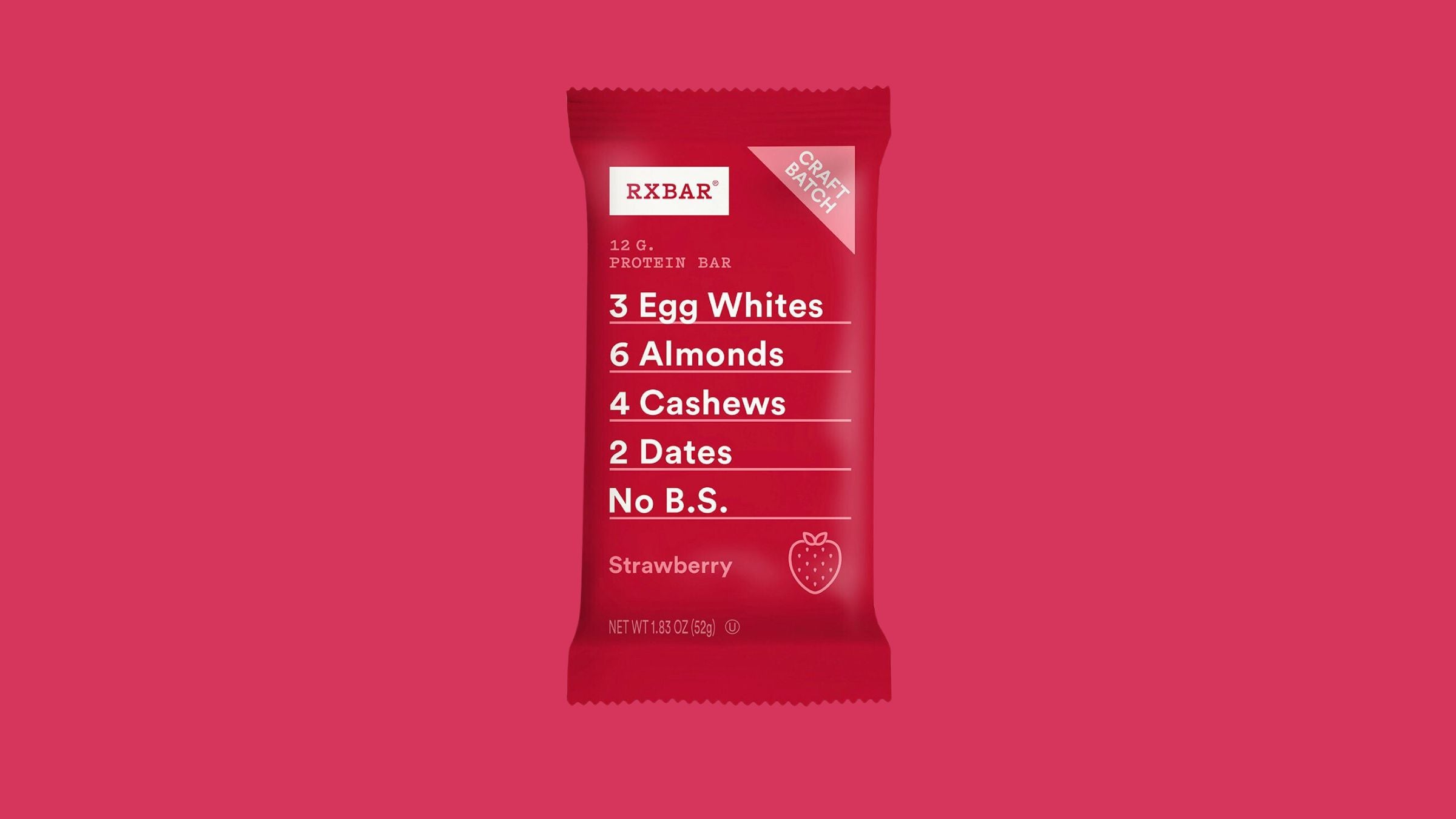
| Calories | 200 |
| Protein | 12g |
| Carbs | 24g |
| Fat | 8g |
| Fiber | 3g |
| Added sugar | 0g |
Taste/texture: ★★★★
Protein: ★★★
Overall nutritional value: ★★★★★
Gut friendliness: ★★★★
Let’s praise this bar for being made with real dried strawberries as opposed to some mystery berry flavoring, and for having a straightforward, simple ingredient list that contains no added sugar.
Egg whites are a clever way of working in high-quality protein without relying on the industry standard of powders or soy nuggets. And there aren’t any ingredients that could bring on digestive woes for most people.
The caveat being that dates fall firmly into the FODMAPs (fermentable oligosaccharides, disaccharides, monosaccharides, and polyols) category, meaning they contain a type of carb, more precisely fructan, that can trigger digestive symptoms in people with gastro health problems such as IBS. The texture gets mixed reviews but the bar does taste good and holds together well.
Section dividerOne Peanut Butter & Jelly
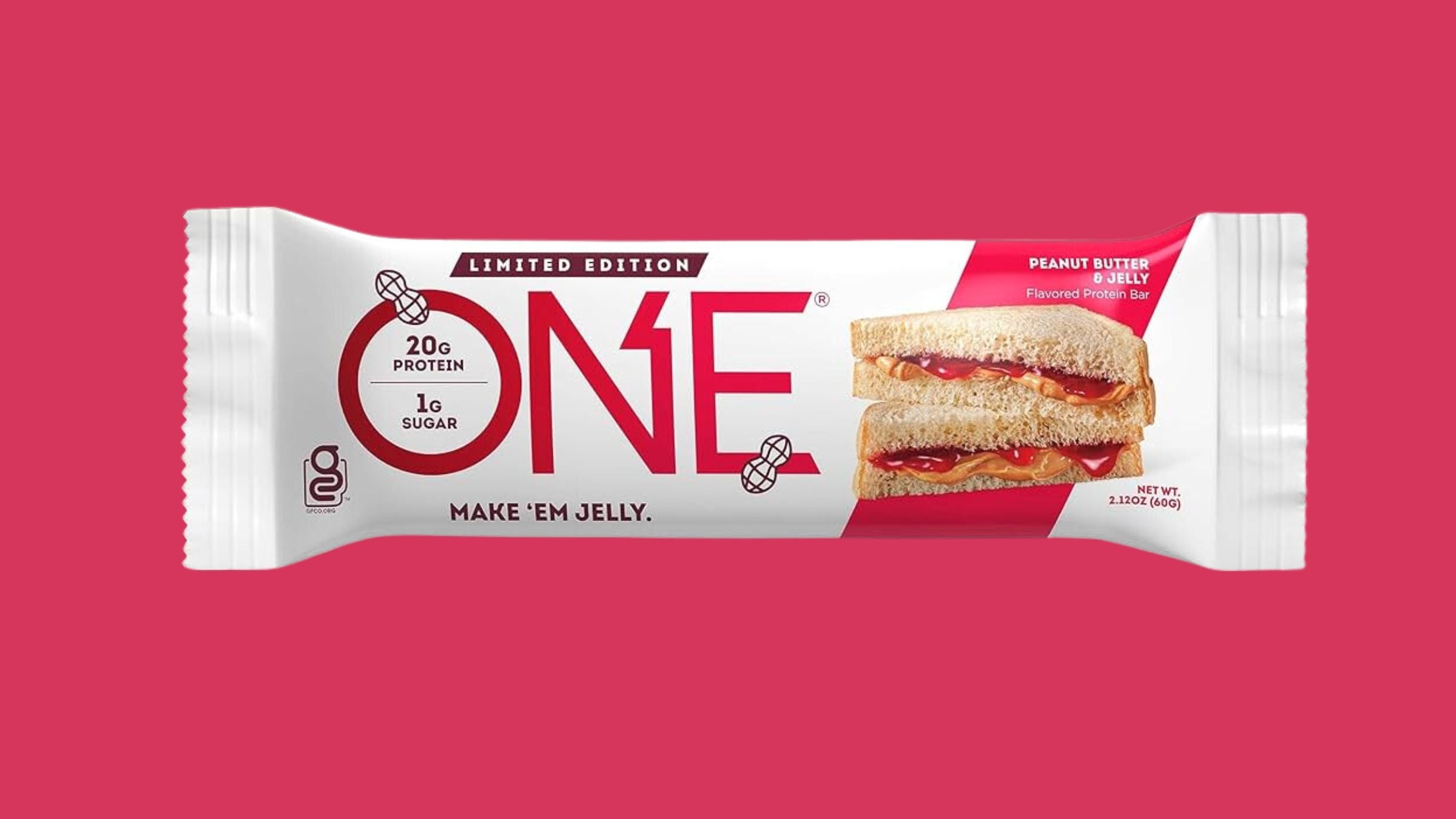 (Photo: ONE)
(Photo: ONE)| Calories | 220 |
| Protein | 20g |
| Carbs | 26g |
| Fat | 7g |
| Fiber | 6g |
| Added sugar | 0g |
Taste/texture: ★★★
Protein: ★★★★★
Overall nutritional value: ★★★
Gut friendliness: ★★
With a taste reminiscent of everyone’s favorite post-run sandwich, this bar has an appealing amount of protein to show your muscles some love and take a hammer to hunger.
“For most people without a dairy allergy, the whey protein would be a good choice in terms of bioavailable protein, meaning it can be digested easily and is easy for the body to use,” says Kissane.
There is one drawback: Kissane explains that the soluble fiber and sugar alcohol (used to add sweetness in lieu of regular sugar) added to the bar could be problematic for people who have irritable bowel syndrome or have issues with bloating, gas, or diarrhea. And some will find the ingredient list runs a bit long, which means more chances of added ingredients and fillers that may mess with your gut. You’ll taste more peanut butter than jelly, and there is a chewy, slightly sticky feel to this bar that requires a good amount of mouthwork to process.
Section dividerAloha Chocolate Mint
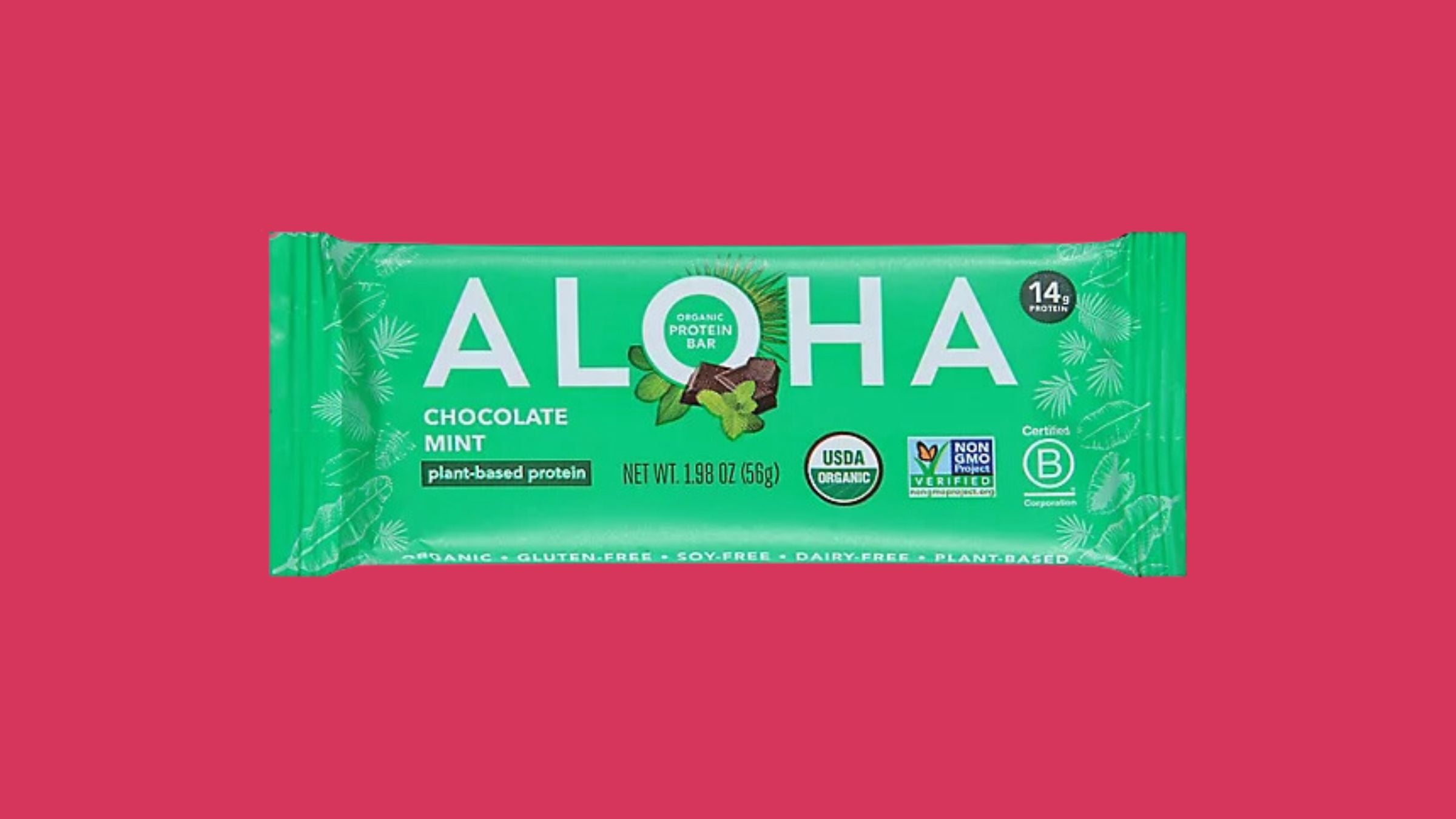
| Calories | 220 |
| Protein | 14g |
| Carbs | 26g |
| Fat | 9g |
| Fiber | 10g |
| Added sugar | 4g |
Taste/texture: ★★★★
Protein: ★★★
Overall nutritional value: ★★★★★
Gut friendliness: ★★★
Made with organic ingredients, this plant-based bar has a nice creamy texture and refreshing minty flavor that is not overpowering in a Thin Mint kind of way. The protein comes courtesy of brown rice protein and pumpkin seed protein, which Kissane says are good for muscle-building purposes.
The high amount of fiber makes the bar a sketchy pre- or during-run fueling option, but Kissane says it’s tapioca fiber, which is generally more tolerated than the inulin or chicory root fiber often added to other bars. The bar’s dark chocolate coating can become messy if it melts, so users beware if bringing it out on the trail with you.
Section dividerBonk Breaker Double Fudge Brownie Bars
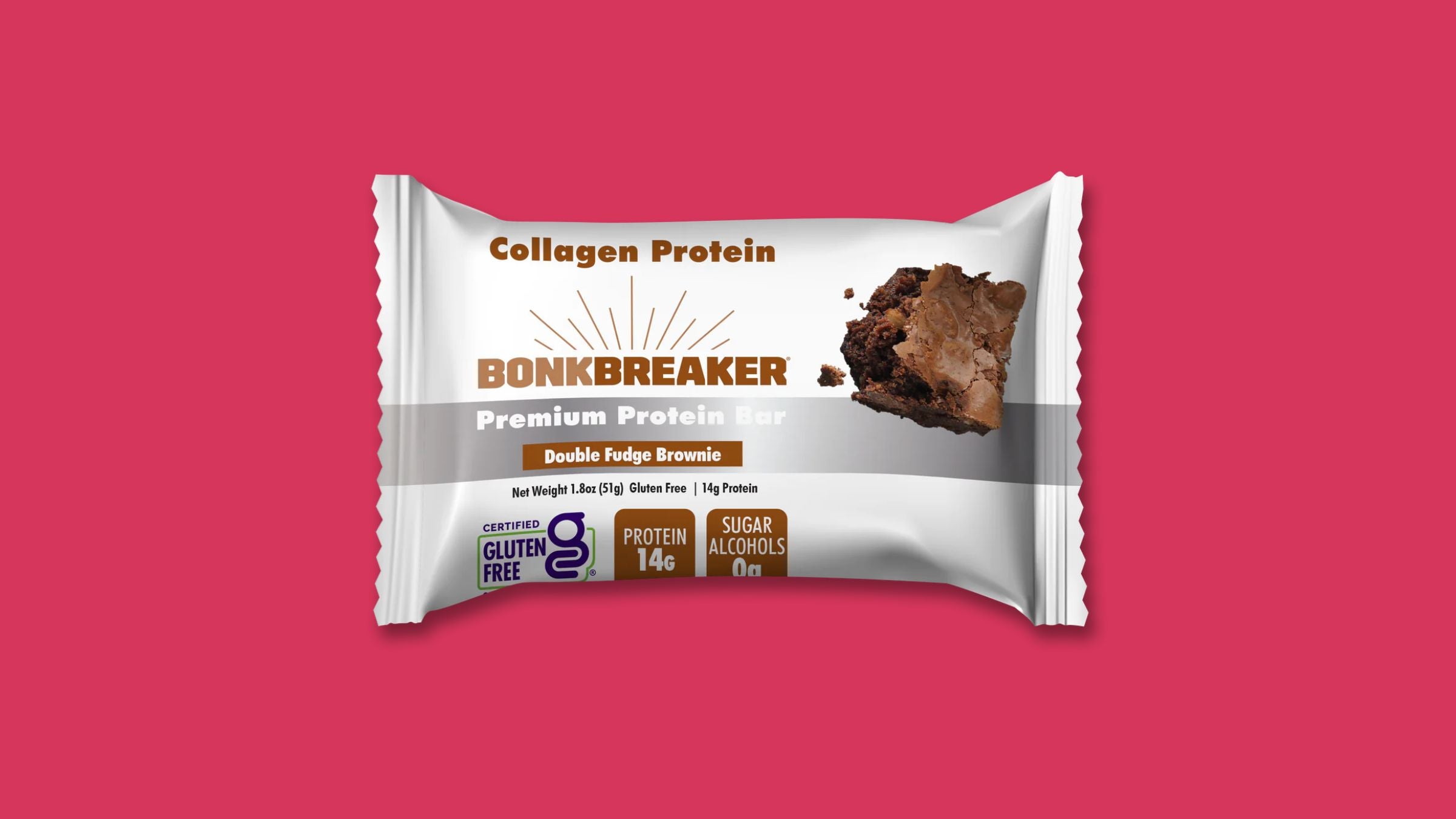 (Photo: Bonk Breaker)
(Photo: Bonk Breaker)| Calories | 190 |
| Protein | 14g |
| Carbs | 22g |
| Fat | 8g |
| Fiber | 4g |
| Added sugar | 9g |
Taste/texture: ★★★★★
Protein: ★★★★
Overall nutritional value: ★★★★
Gut friendliness: ★★★
Tastes like an undercooked brownie … yum. The protein in this decadent-tasting bar hails from a dynamic duo of grass-fed whey and collagen protein. Though whey protein is certainly a stellar muscle-builder, Kissane is less excited about the collagen, saying that it doesn’t have all the necessary amino acids, and the amount here likely won’t do much to improve joint health.
Though most people need to be eating more fiber, the lofty amount of it in this bar is not going to be great for everyone’s unaccustomed guts. It’s sweetened with stevia extract, too, which some may find leaves their taste buds tinny. Though this aftertaste is disguised better than in some other bars.
Section dividerKind Protein Dark Chocolate Nut
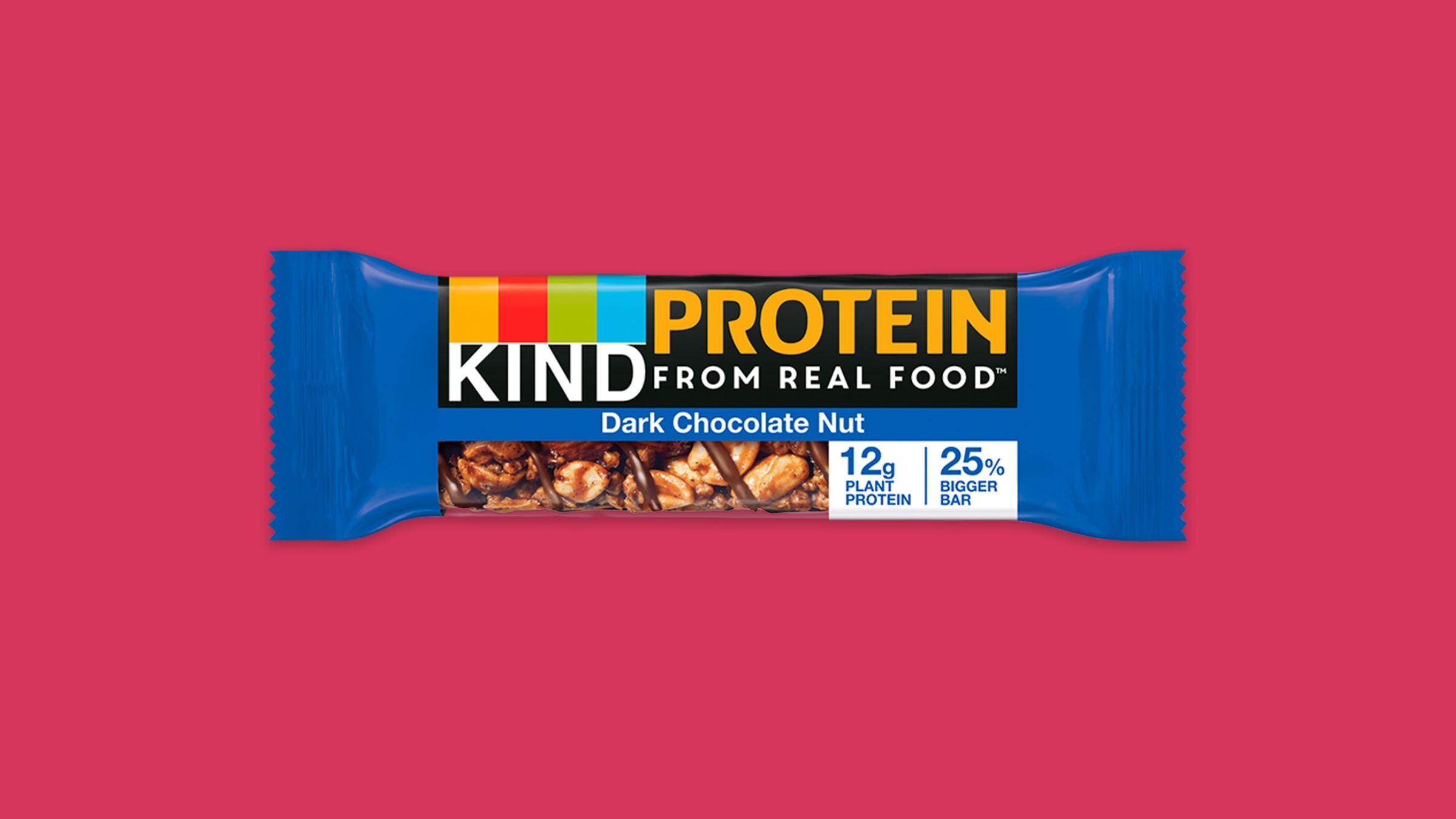 (Photo: KIND)
(Photo: KIND)| Calories | 240 |
| Protein | 12g |
| Carbs | 18g |
| Fat | 17g |
| Fiber | 5g |
| Added sugar | 6g |
Taste/texture: ★★★★
Protein: ★★★
Overall nutritional value: ★★★★
Gut friendliness: ★★★
KIND bar fans will love this beefed-up version that also features a generous amount of nutrient-dense crunchy nuts and 12 grams of plant-based protein, which comes from the nuts and soy protein isolate. (Need to know: research shows that soy protein can be just as effective in muscle-growing as animal-based proteins.)
The fat profile from nuts is more beneficial than that from the palm oil used in many protein bars, and it’s free from artificial flavors and preservatives. But purists may not laud the 6 grams of added sugar. The combo of sugar and protein, however, could spur on faster muscle recovery after a hard run.
Then there’s added fiber from chicory root, but the amount isn’t huge so it should be OK for most tummies to handle, and the bar isn’t sweetened with potentially troublesome sugar alcohols. Again, watch out for the chocolate coating that may not travel well. Ask me how I know.
Section dividerEpic Beef Barbacoa-Inspired Bar
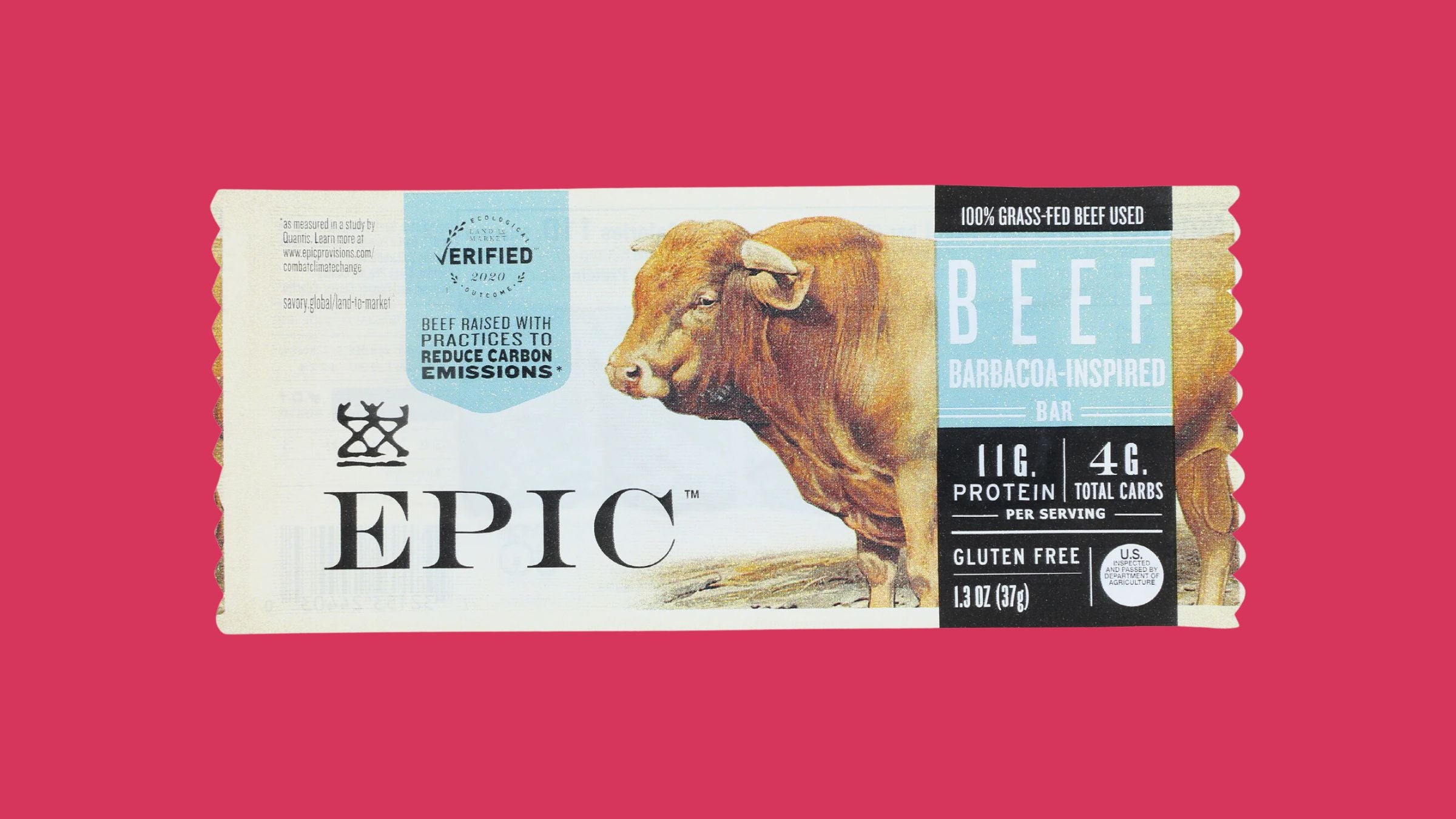
| Calories | 110 |
| Protein | 11g |
| Carbs | 4g |
| Fat | 6g |
| Fiber | 3g |
| Added sugar | 0g |
Taste/texture: ★★★
Protein: ★★★
Overall nutritional value: ★★★★
Gut friendliness: ★★★★★
Perfect for meat lovers and the carb-conscious, this jerky-like bar is made with just beef and seasonings, so it goes down easy on the gut as long as you aren’t living the plant-only life.The protein is slightly on the low side to be considered a definite protein bar, but the quality of the macronutrients in beef is first-rate, which means a little less goes a long way and it’s enough for a perfectly acceptable snack.
The 620mg of sodium in a bar is on the high side, so if you are eating this daily make sure to go easy on the salt elsewhere in your diet. And some people will have a hard time getting used to the texture of a bar that is a bit like chewing on beef tartare.
